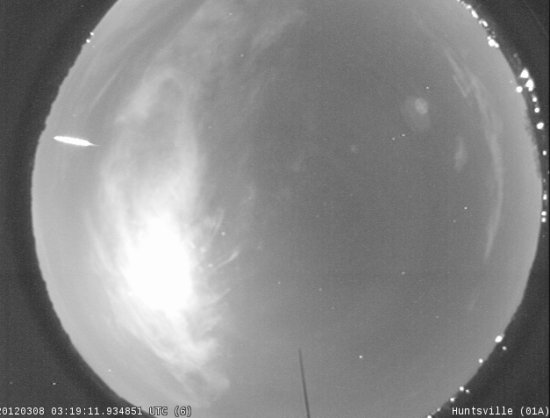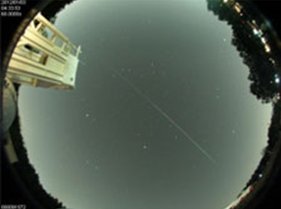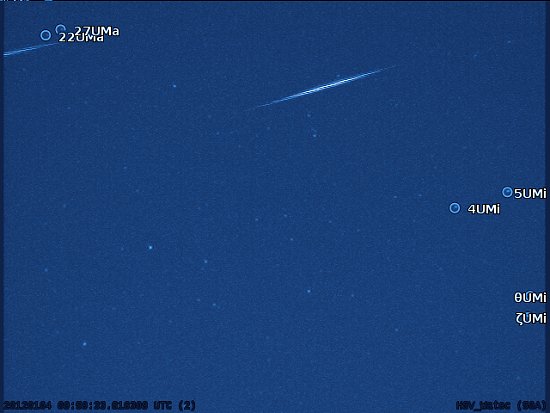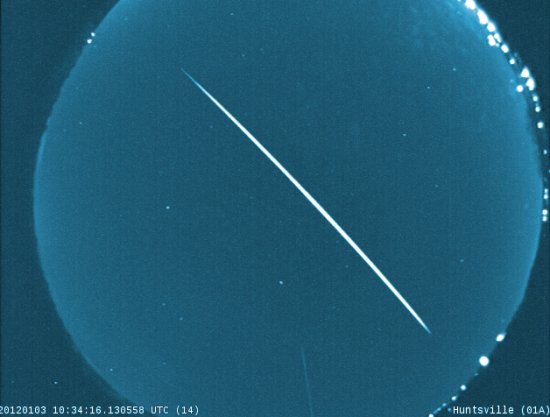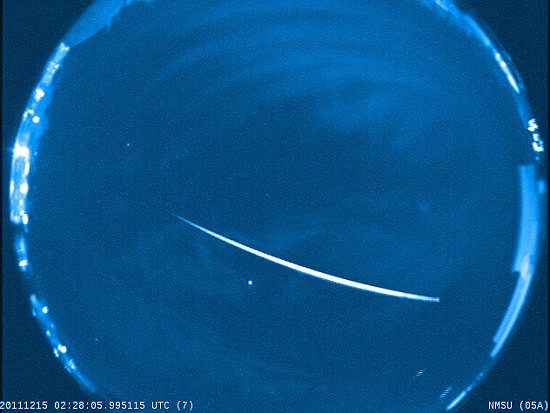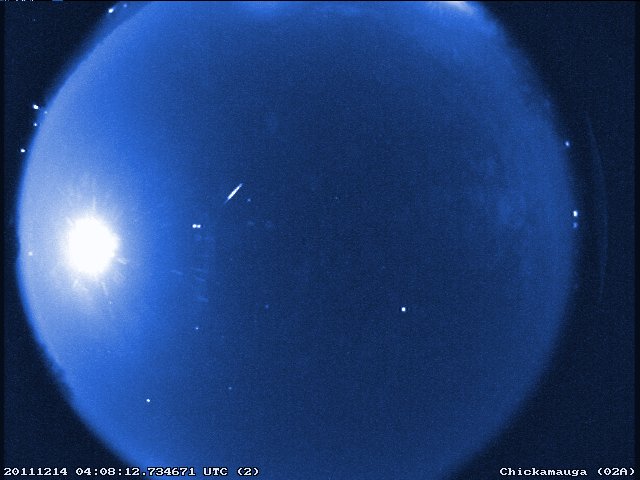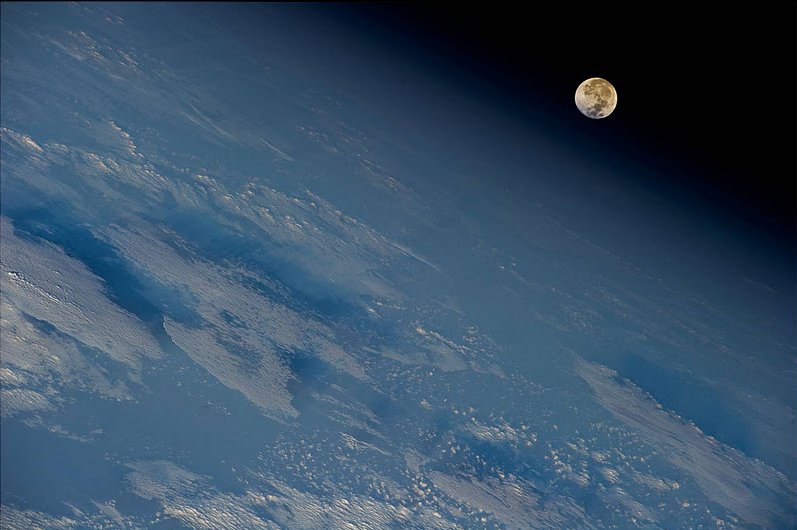The NASA Meteoroid Environment Office can confirm a bright fireball observed by several eyewitnesses in Alabama, Georgia and Tennessee on Mar. 7, 2012 at 10:19:11 p.m. EST. The fireball was observed by three NASA cameras located at Marshall Space Flight Center in Huntsville, Ala., Tullahoma Tenn., and Cartersville, Ga. The meteor was first recorded at …
Bright Fireball Over Georgia
